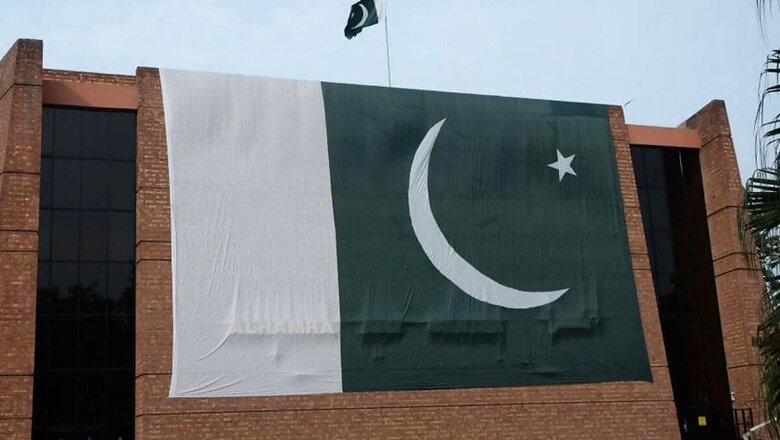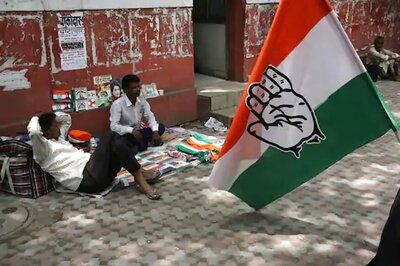
views
When it comes to currency distribution that runs a country, Pakistan believes in taking more from its citizens than giving it to them even if it compromises health services and education needs, the two most fundamental necessities of every common, poor man to survive and grow in life.
According to the World Bank data, Pakistan’s military expenditure was 18.435% of its general government expenditure in 2019. India, according to the current budget estimates, will spend 13.73% of the government expenditure on the defence sector this year.
While India has seen a sustained dip in its military expenditure, i.e, from 17.08% in 2016-17 to 13.73% now, Pakistan has been consistently raising it since 2013, from 15.9% to now around 18.4%.
That is in a country where every Pakistani citizen has a loan of 175,000 Pakistani rupee (PKR) or $1118.45 dollars as accepted by the Pakistan government in its parliament recently. And 46% of it has been added during the last two years under Imran Khan’s tenure only.
How much Pakistan spends on the basic life needs of its citizens, on their health and education needs?
Almost nothing when we see the last budgetary allocations made. According to the Pakistan’s 2020-21 budget, the current estimated expenditure is PKR 6.345 trillion or $41 billion (based on the current calculation of PKR to the US dollar) out of the overall expenditure of $44 billion.
Of this current expenditure, 47% or $19.35 billion goes into debt servicing. Pakistan has an external debt of $114 billion that invariably translates into Pakistan taking more loans and imposing more taxes and surcharges to meet its repay obligations. Means, putting more debt on Pakistanis.
Defense allocations are around 19% of the current budget or $8.5 billion. But according to an analysis in an Al-Jazeera report, if we count in other defence expenditure not mentioned in the budget, it is around $11 billion or 25%.
Pakistan’s budget didn’t include many defence allocations like arms acquisitions, military pensions, nuclear programme, para-military forces and many more as per the analysis, something that puts Pakistan’s defence spending around $11 billion.
Pakistan’s economy is surviving on an IMF loan package of $6 billion and Pakistan is under tremendous pressure to show it to the agency that it is judiciously using the scarce resources it has and so we can understand why the country was forced to hide its entire defence spending in the budget.
If IMF is not satisfied, it will not revive its $6 billion Extended Fund Facility (EFF) programme which a debt laden country like Pakistan needs desperately as no EFF programme means no support from other global financial institutions like the World Bank and the ADB.
Imran Khan’s government in Pakistan plans to meet most of this expenditure through raising tax collection even if no new taxes were announced in the budget. A tax collection target of $32.6 billion dollars was fixed, an increase of over 27% from the previous year, to meet the revenue target of $43.16 billion.
How it reflects on the already debt-ridden Pakistanis?
According to the World Bank, Pakistan’s population was 21.66 crores in 2019. The $11 billion defence expenditure means an additional $51 dollars or PKR 7767 burden on every Pakistan to meet the figure set in the last budget.
But when we put it against the overall tax collection target, it looks even more sinister, an additional burden of $150 dollars or PKR 22,845.
True, every Pakistani citizen is not a taxpayer. Also, Pakistanis are under no direct obligation to pay the $1,118.45 dollars loan but indirectly, they will have to share the load when it comes to generating revenues to repay the debt. The article here does a general calculation to put some light on the grave situation every Pakistani citizen is in, especially when we compare it with the welfare measures being undertaken by the government.
The 2020-21 budget reduced subsidies by 48%, increased petroleum levy by 73% and froze salary and pension hikes. Add to that, Pakistan recently decided to hike power tariffs significantly to meet another IMF demand.
For the two most fundamental basic needs for a common man, health and education, it allocated just $151 million and $545 million respectively in the last budget. They are so small allocations that you can’t even compare them with the sky-high defence or infrastructure allocations.
It boils down to $0.7 or PKR 106 health assistance cost to each Pakistani citizen annually. Imagine how Pakistan would have handled the COVID-19 pandemic.
When it came to education, the only empowerment opportunity for a common person, the Imran Khan government decided to spend just $2.5 or PKR 381 annually. That is in a country where 64% of the population is under 30 years of age and 29% of the population is between 15 and 29 age group as per a UNDP analysis.
It is just humiliating them, especially when you give the military businesses in your country tax exemption of $91 million last time; especially when Pakistan is staring at 25 million more poor families to take care of post the COVID pandemic; especially when the already plummeted economic growth further plummeted with the pandemic, from 2.4% in 2020-21 to -1.5% now.
Read all the Latest News, Breaking News and Coronavirus News here. Follow us on Facebook, Twitter and Telegram.



















Comments
0 comment